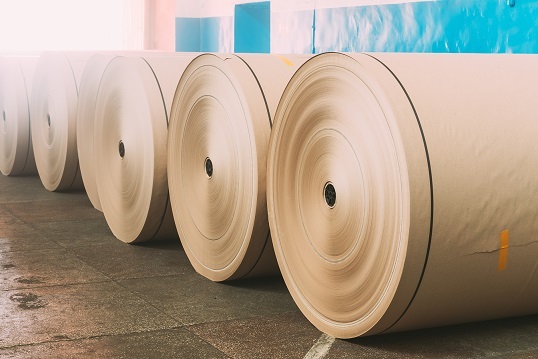
 Data Structure
Data Structure Networking
Networking RDBMS
RDBMS Operating System
Operating System Java
Java MS Excel
MS Excel iOS
iOS HTML
HTML CSS
CSS Android
Android Python
Python C Programming
C Programming C++
C++ C#
C# MongoDB
MongoDB MySQL
MySQL Javascript
Javascript PHP
PHPPhysics
Chemistry
Biology
Mathematics
English
Economics
Psychology
Social Studies
Fashion Studies
Legal Studies
- Selected Reading
- UPSC IAS Exams Notes
- Developer's Best Practices
- Questions and Answers
- Effective Resume Writing
- HR Interview Questions
- Computer Glossary
- Who is Who
Name Two Industries Based On Forest Produce
Introduction
Forests are not only a source of natural beauty, but they also provide raw materials for various industries. The forest industry is an essential contributor to the global economy. Two industries based on forest produce that have been around for centuries are the paper industry and the furniture industry.
In this article, we will take a closer look at both of these industries, their history, and their impact on the environment.
The Paper Industry
The paper industry is one of the oldest industries in the world. It has been around for more than 2,000 years. The Chinese are credited with inventing paper around 105 AD. They made paper from the inner bark of mulberry trees, hemp, and other plants. The paper-making process was a closely guarded secret for many years. Eventually, the knowledge of paper-making spread to other countries, including India, Japan, and Europe.
The modern paper industry started in the 19th century with the invention of the Fourdrinier machine. The Fourdrinier machine is a device that produces a continuous sheet of paper. It revolutionized the paper-making process and allowed for mass production of paper. The first Fourdrinier machine was installed in a paper mill in Frogmore, Hertfordshire, England, in 1803.
The paper industry has come a long way since the invention of the Fourdrinier machine. Today, paper is made from a variety of raw materials, including wood pulp, recycled paper, and agricultural residues. However, the primary raw material for paper is still wood pulp. Wood pulp is made from the cellulose fibres found in trees.
The process of making paper from wood pulp involves several steps. First, the logs are debarked and chipped into small pieces. These pieces are then cooked with chemicals to break down the lignin, which holds the cellulose fibres together. The resulting pulp is washed and bleached to remove impurities. Finally, the pulp is formed into sheets of paper and dried.
The paper industry has a significant impact on the environment. The production of wood pulp requires a large amount of energy and water. It also results in the release of pollutants, such as dioxins and furans, into the air and water.
Deforestation is another issue associated with the paper industry. Forests are being cleared at an alarming rate to make way for pulpwood plantations. This deforestation is contributing to climate change and the loss of biodiversity.
However, the paper industry has taken steps to reduce its impact on the environment. Many paper companies have implemented sustainable forestry practices to ensure that the wood used to make paper comes from responsibly managed forests.
The use of recycled paper has also become more widespread, reducing the need for virgin wood pulp. Additionally, many paper mills have installed advanced pollution control equipment to reduce emissions.

The Furniture Industry
The furniture industry is another industry that is based on forest produce. Furniture has been around for thousands of years, and the use of wood as a raw material has been a constant throughout history. The ancient Egyptians, Greeks, and Romans all used wood to make furniture.
The modern furniture industry began in the 19th century with the Industrial Revolution. Mass production techniques were developed, and furniture became more affordable and accessible to the masses. The introduction of steam-powered machines and later electric-powered machinery made furniture production faster and more efficient.
Today, the furniture industry is a multi-billion-dollar industry that employs millions of people worldwide. The primary raw material used in furniture production is wood. Wood is used to make everything from tables and chairs to cabinets and bookshelves.
The process of making furniture from wood involves several steps. First, the logs are sawn into boards or veneers. These boards or veneers are then dried to remove moisture. The dried boards or veneers are then planned to remove any imperfections and to create a smooth surface. The wood is then cut and shaped using a variety of tools and techniques, including sawing, routing, and sanding. Once the wood has been shaped, it is assembled using glue, nails, or other fasteners.
The furniture industry, like the paper industry, has a significant impact on the environment. The production of furniture requires a large amount of wood, which can lead to deforestation and habitat destruction. The use of wood also results in the release of carbon dioxide into the atmosphere, contributing to climate change.
However, the furniture industry has taken steps to reduce its impact on the environment. Many furniture companies have implemented sustainable forestry practices, such as using wood from responsibly managed forests and promoting reforestation. The use of alternative materials, such as bamboo and recycled wood, has also become more widespread. Additionally, many furniture manufacturers have implemented energy-efficient production processes and have installed pollution control equipment.

Conclusion
In conclusion, the paper and furniture industries are two industries that are based on forest produce. Both industries have been around for centuries and have played a significant role in the global economy. However, both industries also have a significant impact on the environment, particularly in terms of deforestation and pollution.
The paper and furniture industries have taken steps to reduce their impact on the environment. Many companies have implemented sustainable forestry practices and have promoted the use of alternative materials. Additionally, many companies have implemented energy-efficient production processes and have installed pollution control equipment.

